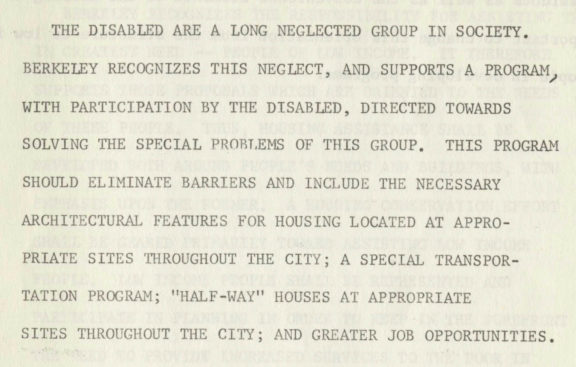By 1974, something had changed.
There is a sharp contrast to the vague, ambiguous agenda of the Planning Commission’s “People of Berkeley” policy put out a year before. It appears the City received a crash course on disability advocacy. This new disability policy is sensitive to issues (“physically handicapped” is no longer mentioned). It also enumerates some of the building blocks for independent living: promoting dignity, access to transportation, access to appropriate medical services, employment, accessible housing, and accessible vans. The independent living “program”was moving full steam ahead.
Importantly, Berkeley’s new policy required that any issues or problems pertaining to disability include participation by the disabled community. This came at a moment in Berkeley when citizens became increasingly more involved in public decision making, coalescing over renter’s rights, improved street conditions, and new zoning laws. In 1973, Berkeley citizens famously organized against the overdevelopment of residential housing and voted the Neighborhood Preservation Ordinance (NPO) into law. The NPO also established public hearing requirements for housing projects.
The report’s front cover mentions a public hearing happening on Wednesday January 15th, but the year is unspecified. It’s possible that a public hearing was organized to comment on the November ’73 policy, given that Eric Dibner joined the Planning Commision’s Housing Committee in the summer of ’73.
